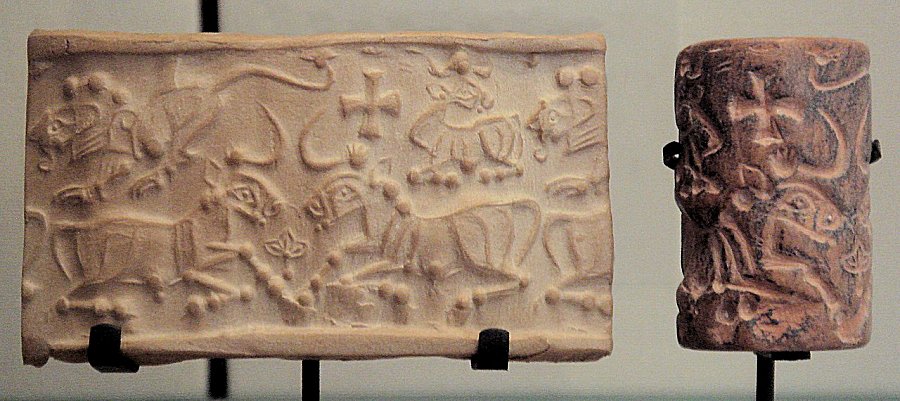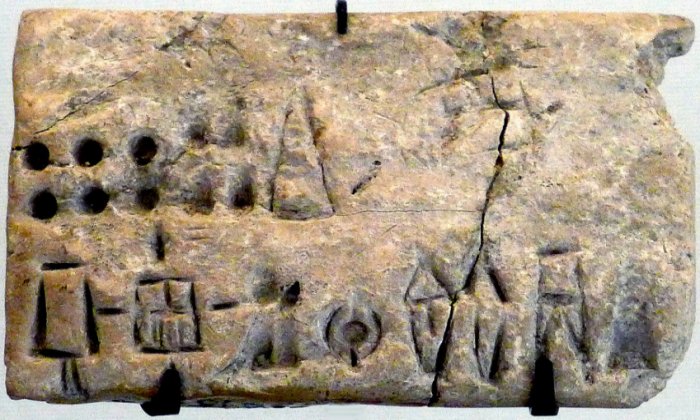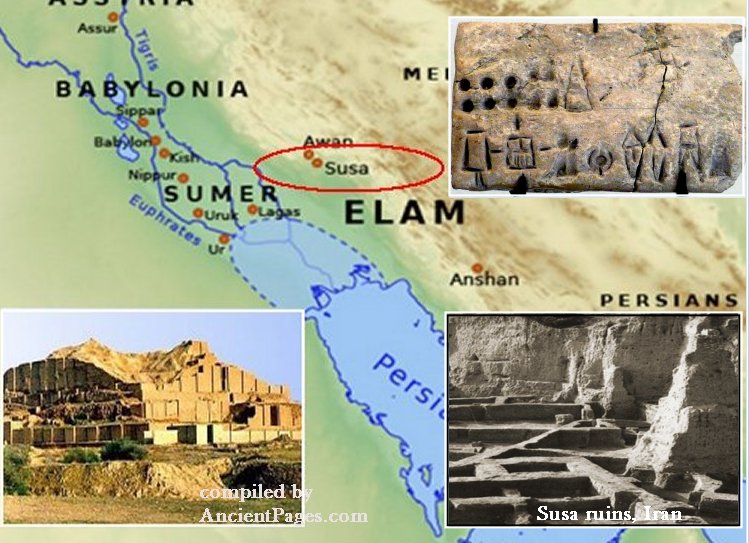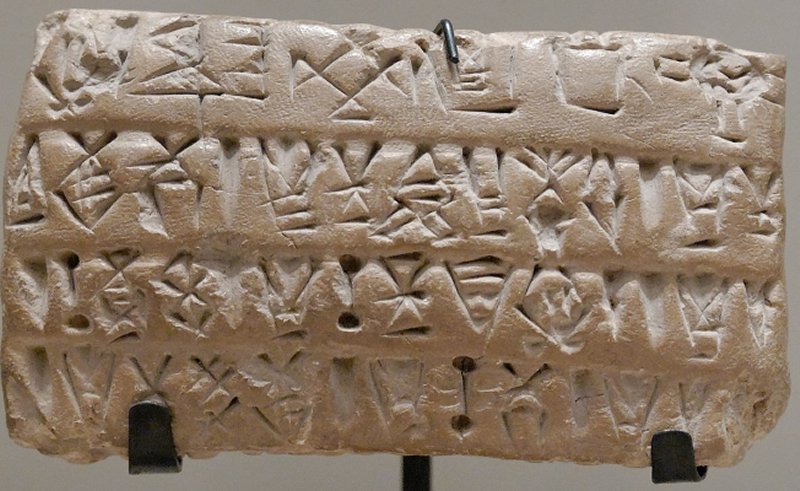A. Sutherland – AncientPages.com – The Proto-Elamite script is the world’s oldest system of writing that has yet to be deciphered. This Early Bronze Age writing was briefly in use before the introduction of Elamite cuneiform.

Susa III/ Proto-Elamite cylinder seal with bulls and lion, 3100-2900 BC, Louvre Museum, reference Sb 6166. Source
Later, Elamite cuneiform was adapted from Akkadian Cuneiform and used from c. 2500 to 331 BC. It consisted of roughly 130 glyphs and only a few logograms from Akkadian. Over time, the number of logograms increased, and the writing consists of about 20,000 tablets and fragments. Most of them belong to the Achaemenid Era (730 – 330 BC) and contain mainly financial records.
The Proto-Elamite script consists of about 1,000 signs and is therefore thought to be partly logographic (with written characters representing a word or a small meaning).
The name “Proto-Elamite” refers to a writing system in use in the Susa plain and the Iranian highlands located east of Mesopotamia (ca. 3100 (3050) and 2900 (2700) B.C., a period generally believed to correspond to the Uruk III /Jamdat Nasr through Early Dynastic I periods in Mesopotamia.

Economic tablet in Proto-Elamite, Suse III, Louvre Museum, reference Sb 15200, circa 3100-2850 BC. Image source – Mbzt – CC BY 3.0
Proto-Elamite tablets represent the earliest complex written documents from the region. The script consists of numerical and ideographic signs, and the latter sometimes ᴀssumed to represent a genetically related forerunner of the Old Elamite language. However, this supposed forerunner language is unknown, and the script itself has been only partially deciphered.
The Proto-Elamite script is thought to have been developed from early Sumerian writing. It was used over a vast geographical area, stretching from the ancient city of Susa in the west, to Tepe Yahya in the east, and perhaps even beyond. The knowledge about this language comes from approximately 1600 existing tablets, and most of them were unearthed at Susa.
The very old are also early cuneiform writing and hieroglyphics; however, if we think of mental work needed to read the Elamite scripts, generally, it is more challenging than reading the hieroglyphics.
Francois Desset And Linear Elamite Script
The linear Elamite script was used in the kingdom of Elam for several centuries, between the end of the third and the beginning of the second millennium B.C.

Not long ago, more precisely in 2020, Francois Desset of the Laboratoire Archeorient in Lyon, France, announced a decipherment and translation of a Linear Elamite script – phonetic writing of cuneiform type used 4,400 years ago in what is now Iran.
Multiple clay tablets covered with this handwriting were first unearthed in the ancient ruins of Susa in 1901. For the last 120 years, linguists could not decipher and eventually fully understand what was written more than four millennia ago.
Until today, the proto-cuneiform script from Mesopotamia dated to around 3300 BC.was considered the oldest example of writing.
However, reading the Linear Elamite script makes us change our view on this subject. Now, it is known that in parallel, around 2300 BC, according to Desset, another system of writing was emerging, and its oldest version (proto-Elamite script), maybe as ancient as the oldest Mesopotamian proto-cuneiform tablets.
In short, the first does not consтιтute a “mother writing” of which the proto-Elamite would be the daughter. In reality, they are like “two sisters.“
 Economic tablet with numeric signs and Proto-Elamite script. Clay accounting tokens, Uruk period. From the Tell of the Acropolis in Susa. Image source – Marie-Lan Nguyen – CC BY 2.5
Economic tablet with numeric signs and Proto-Elamite script. Clay accounting tokens, Uruk period. From the Tell of the Acropolis in Susa. Image source – Marie-Lan Nguyen – CC BY 2.5
Desset concludes that the script did not first appear in Mesopotamia and later in the region of present-day Iran. Instead, these two writing systems (Mesopotamian Proto – Cuneiform and Iran’s Proto-Elamite) existed in parallel. It was the same writing system that evolved and was recorded differently in different historical periods.
It is an important discovery (Desset’s work still awaits a scientific review) that significantly changes our view of the development of the script. We even have to reconsider all the consequences ᴀssociated with it.
The Linear Elamite script is different from the cuneiform script, a combination of phonograms, which are signs for identifying sounds, with logograms (signs for identifying things, words, or ideas). Linear Elamite writing, on the other hand, is phonetic writing. Individual characters mean syllables, consonants, and vowels. It was, along with proto-Elamite writing, used from about 3300 to about 1900 B.C. At this time, there was a significant evolution of this writing.
For now, it is uncertain whether the Proto-Elamite script was the direct forerunner of Linear Elamite.
Both scripts remain undeciphered. A clear relationship between these two old languages is not proved but can only be speculated.
Written by – A. Sutherland – AncientPages.com Senior Staff Writer
Copyright © AncientPages.com All rights reserved. This material may not be published, broadcast, rewritten or redistributed in whole or part without the express written permission of AncientPages.com
Expand for references
References:
Academia
ResearchGate
University of Tehran





